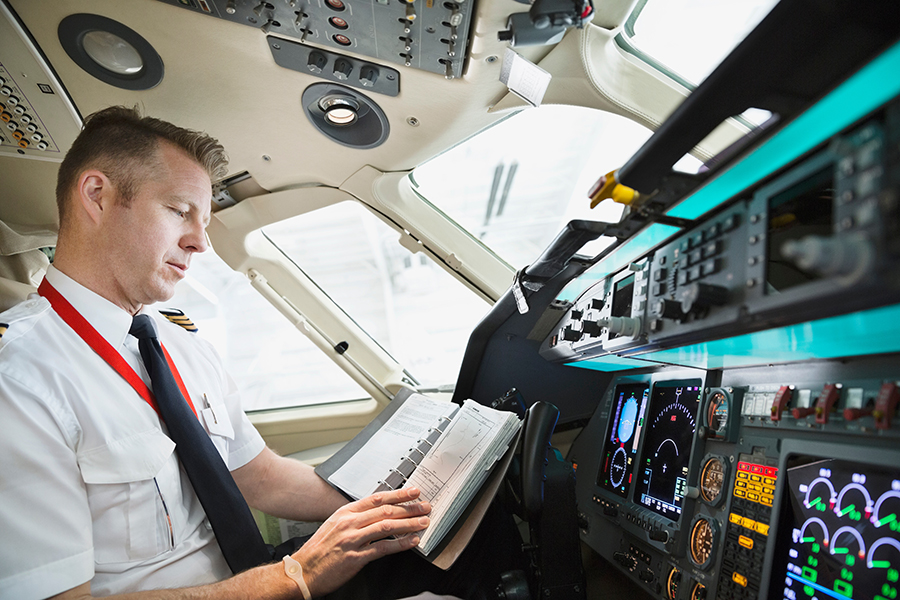The ARROW acronym is used as a memory aid to help pilots remember the five documents legally required to be on board an aircraft.
Imagine this; It’s a beautiful day, and you’ve just completed a fantastic scenic flight while on holiday. On the ramp, an FAA Aviation Safety Inspector (ASI) introduces themselves and asks to see the documents required to be on board the aircraft.
You can’t find one of the documents…
You didn’t use the ARROW acronym to check that all of them are on board, and now you’re miles away from home where the missing document is.
Not a situation you’d want to find yourself in, is it?
ARROW Acronym Defined
Here is what ARROW stands for:
A – Airworthiness Certificate
R – Registration Certificate
R – Radio Station License (only required for international flights)
O – Operating Limitations (such as weight and balance limits)
W – Weight and Balance Data
Let’s dive into each part of the ARROW acronym to ensure you always have the documents you need before each flight.
A – Airworthiness Certificate
The Airworthiness Certificate is a document issued by the Federal Aviation Administration (FAA) that certifies that an aircraft is airworthy and safe to fly.
There are two types of airworthiness certificates: standard and special.
Special airworthiness certificates are issued when an aircraft cannot meet the requirements of a standard airworthiness certificate. The special airworthiness certificate allows the aircraft to operate under certain restrictions.
An airworthiness certificate remains valid as long as the aircraft meets the certificate’s requirements.
R – Registration Certificate
The Registration Certificate is a document issued by the Federal Aviation Administration (FAA) that identifies the ownership of an aircraft and provides proof of its registration with the FAA.
The registration certificate is valid for seven years (since 2023).
R – Radio Station License (International Flights)
The Radio Station License is a document required by the International Telecommunication Union (ITU) for aircraft that operate internationally and use radio communication equipment. The license is issued by the country’s regulatory agency responsible for telecommunications, such as the Federal Communications Commission (FCC) in the United States.
You do not need a radio station license to operate a U.S.-registered aircraft in U.S. airspace.
The Radio Station License authorizes the aircraft to operate its radio communication equipment. It also ensures that the aircraft complies with international regulations and standards for radio communication, such as frequency usage and power limits.
The Radio Station License contains essential information about the aircraft’s radio communication equipment, including its type, model, and frequency capabilities. It also includes the aircraft’s unique call sign, which is used to identify the aircraft during radio communication.
To obtain a Radio Station License, the aircraft owner must submit an application to the local regulatory agency (this is the FCC in the U.S.).
A U.S. aircraft radio station license (issued by the FCC) is valid for ten years.
O – Operating Limitations

Details of the aircraft operating limitations, such as weight and balance limits, must be on board. This is generally limited to the Pilots’ Operating Handbook (POH) and placards in the aircraft.
W – Weight and Balance Data
While you are not legally required to perform a weight and balance calculation for each flight, the weight and balance data necessary to perform a weight and balance calculation must be carried on board.
In other words, you must have the data (e.g., passenger weight and position) to calculate the weight and balance, but you are not legally required to do so.
That being said, it is never a good idea to fly an aircraft without performing a weight and balance calculation, even if it is not legally required.
With weight and balance calculators available for free on your mobile device, there is no real excuse not to take two minutes to run the numbers. You certainly don’t want to be running them for the first time on the ramp with an Aviation Safety Inspector looking over your shoulder.
Conclusion
Simple acronyms such as ARROW can ensure that you always have the required documents on board and that they are valid.
If you don’t bother checking them, the best-case scenario is that you get a slap on the wrist from the FAA if they find something missing or expired, and the worst case is that your insurance company doesn’t pay after an accident (even if it wasn’t your fault). Take the time to check the documents, especially if you aren’t the only one flying the aircraft. All it takes is one misplaced document to cause a world of trouble.




